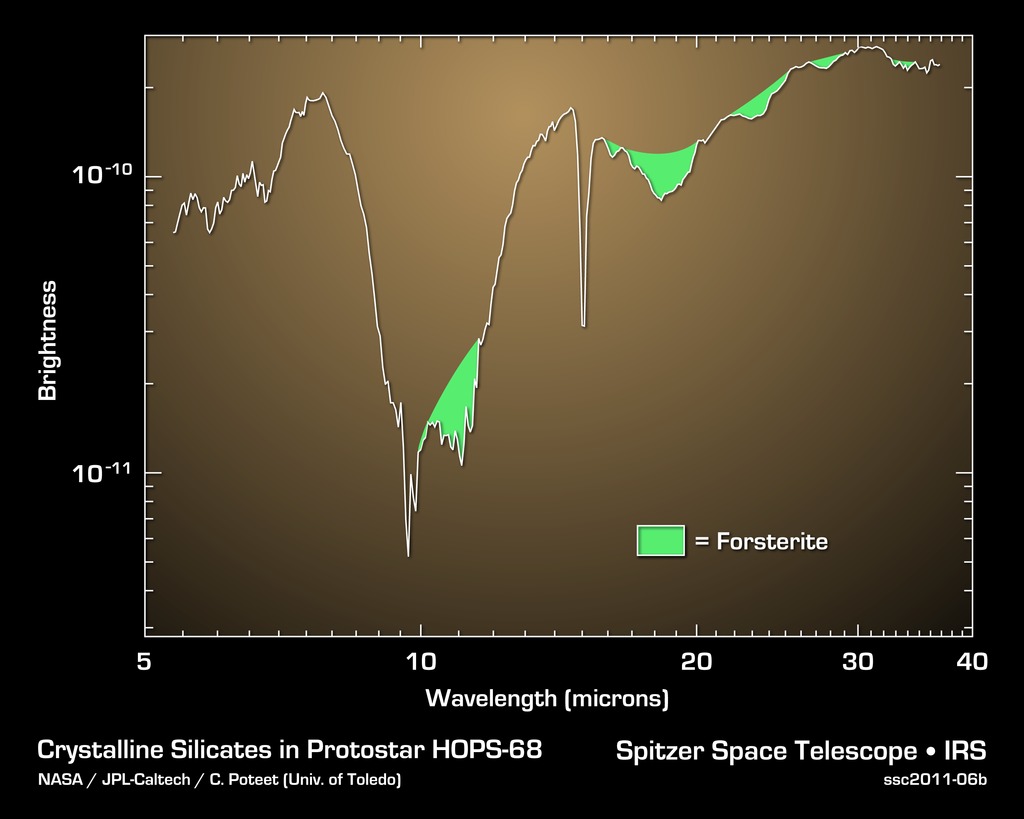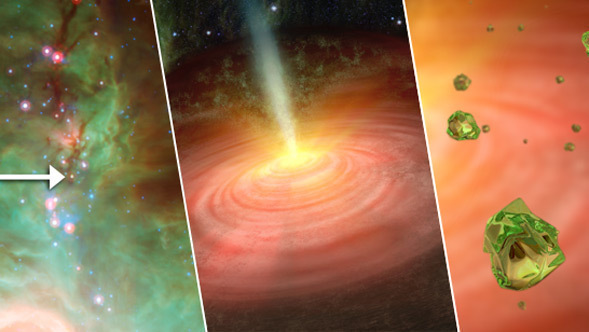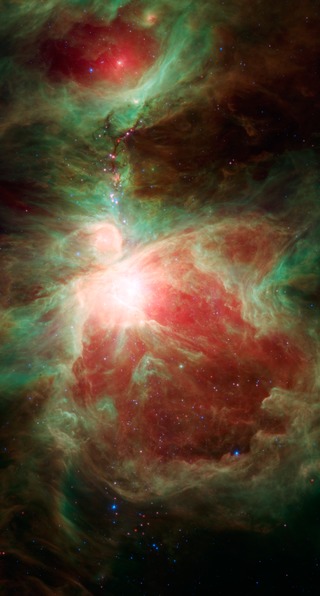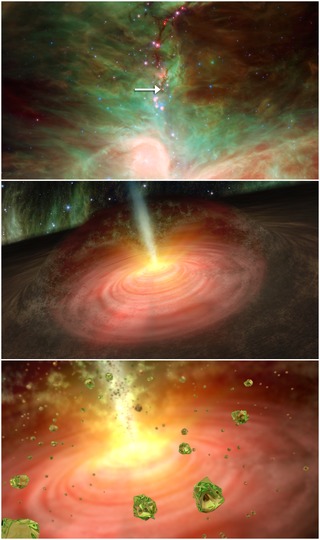
Credit: NASA/JPL-Caltech/C. Poteet (Univ. of Toledo)
Chart • May 26th, 2011 • ssc2011-06b
ssc2011-06b
Using NASA's Spitzer Space Telescope, astronomers have, for the first time, found signatures of silicate crystals around a newly forming protostar in the constellation of Orion. The crystals are from the olivine silicate minerals known as forsterite, and are similar to those found on the green sand beaches of Hawaii.
The data in the graph were taken by Spitzer's infrared spectrograph, which sorts infrared light relative to its color, or wavelength. The characteristic spectral signatures of the crystals are shaded in green.
The formation of forsterite crystals requires relatively high temperatures near 1,300 degrees Fahrenheit (700 degrees Celsius). The crystals were not expected to beseen in the cold environment of a newly forming star (minus 280 degrees Fahrenheit or minus 130 degrees Celsius). Astronomers believe that these crystals were created near the protostar and carried up to a cold, collapsing cloud of gas and dust by jets of gas. The crystals are expected to eventually rain back down onto the protostar's planet-forming disk, possibly to be used in the formation of comets.
About the Object
- Name
- HOPS 68 • Orion
- Type
- Star > Evolutionary Stage > Protostar
- Star > Circumstellar Material > Disk > Protoplanetary
- Nebula > Type > Jet
- Distance
- 1,450 Light Years
Color Mapping
| Band | Wavelength | Telescope |
| Infrared | Spitzer IRS |







